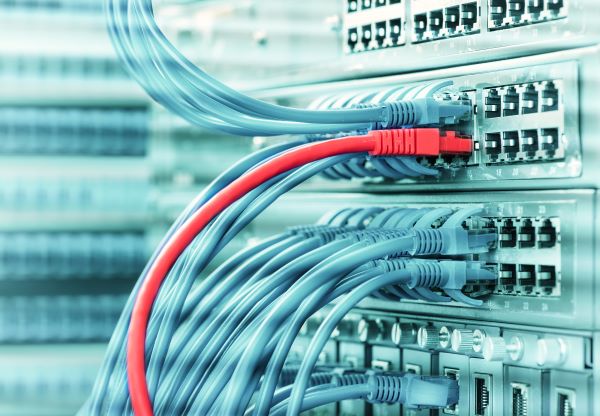Cat6 Class E cable was first introduced in 2002. The Cat6a Class Ea cable was introduced in 2008. While there are higher specified cables out there today, the reality is that cat6a cabling is the cable of choice for new commercial installations and it will stay this way for the foreseeable future. Let’s remember that Cat6 cables will support gigabit ethernet over 90 metres. But from a future proofing point of view, Cat6a cables will support 10 gigabit ethernet over 90 metres.
Now the majority of network switches installed in new commercial installations have gigabit ethernet ports. Internet routers also have gigabit ethernet ports. Why? Because 10 gigabit switches are very expensive. And what is the fastest download speed currently offered by our internet service providers over fibre? Gigabit!
Both Cat6 and Cat6a cables are 23AWG. Power over Ethernet (PoE) is now a common platform. We see it with wireless access points and camera systems. The heavier gauge cables have to carry up to 48VDC for PoE devices. Voltage drop is still an issue in the data world as well. The Cat6 cable has a small pair separator, making the overall diameter of the cable 6.5mm. The Cat6a cable has a larger pair separator, which makes the overall diameter of the cable 8.5mm. This pair separator helps with the transmission speeds by balancing the cable pair structure further. This reduces the possibility of noise interference from other power sources. The separator also helps dissipate the small amount of heat that PoE produces. The pair separator gives the cable pairs more protection which makes the cable more robust. The list goes on.
As noted above Cat6a cabling is the choice of cable for new commercial installations. If you want to start installing Cat6a cables in new residential houses go for it. It is probably over-kill at this stage. But as houses and buildings are expected to last for decades, maybe the cabling we install today should last the test of time as well?
Some things to remember. Cat6a is also backwards compatible with Cat6 and Cat5e products, however, speeds are always limited and will perform to the lowest category cable or connector that is installed in the link. Cat6a is fast becoming the lowest cost- effective solution as it is seen as a future-proofed cable system.
End users also have the option of selecting from either a shielded or an unshielded solution. Shielded Cat6a cable generally has an outer foil shield around each individual pair or around all 4 copper pairs. In addition, modular jacks, outlets and patch panels are also protected by a metal housing around these components. Each solution has its place, as well as its own set of benefits.
In Summary
How do you decide on which structured cabling system to use? How do you decide on whether to install Cat6 or Cat6a? The answer to these questions is actually quite simple to answer than you may think. First off, what current applications are being utilized? What future applications do you see your organization using? What growth to your network do you expect over the next five years in terms of data transmitted and the number of users? What is the expected life of the building? Will it be 5, 10, 20 or even 25 years? Where are cabling standards heading? What is your budget or expected cost? What will the cost be, not just now, but the cost of re-installing a new network that can cope with future speeds? The main question you need to ask yourself is what would be the best solution for your customer?

